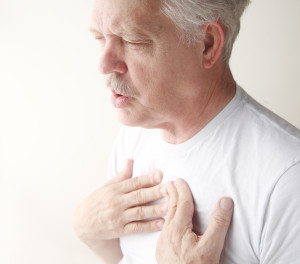Your Questions Answered
Causes of Pulmonary Hypertension
We received a variety of questions about the causes of pulmonary hypertension. I will provide a short refresher and link to a more detailed discussion.
Pulmonary hypertension means elevated pressures within the pulmonary arteries. There are many different causes of this. Experts divide the work of pulmonary hypertension into five different groups (1-5).
Group 1 involves a collection of different disorders that leads to disease of the pulmonary arteries as the primary location of the problem. Group 2 pulmonary hypertension really is a collection of diseases of the left side of the heart such as left heart failure, and valvular heart disease. Group 3 pulmonary hypertension includes diseases that affect the lung tissue as the primary site of injury such as pulmonary fibrosis or emphysema. Group 4 is chronic blood clots that lead to pulmonary hypertension. Group 5 is a collection of unrelated disorders that don’t really fit anywhere else. The most notable member of group 5 is Sarcoidosis.
Within group 1 or PAH there are several further subcategories. The approach to treatment is really driven by the group (1-5). This means that for the most part we approach most patients with group 1 or PAH similarly. Patients that have lung disease or left heart disease are treated differently. In some cases, the treatments for group 4 (chronic thromboembolic pulmonary hypertension) and group 5 (sarcoidosis) may be identical to the treatments for PAH or group 1 disease.
Does pulmonary arterial hypertension cause symptoms all the time?
 This is a great question. Patients that have PAH may have good days and bad days. Even within any given day you may have times when you feel better and worse. You will also find that certain activities reliably cause shortness of breath or fatigue. For example, walking up a flight of stairs or an incline for many patients is consistently difficult. Bending over is often consistently uncomfortable for patients with PAH. That being said, patients that some days can sprint up a mountain and other days have a hard time walking from the bedroom to the kitchen probably have a different explanation for their symptoms.
This is a great question. Patients that have PAH may have good days and bad days. Even within any given day you may have times when you feel better and worse. You will also find that certain activities reliably cause shortness of breath or fatigue. For example, walking up a flight of stairs or an incline for many patients is consistently difficult. Bending over is often consistently uncomfortable for patients with PAH. That being said, patients that some days can sprint up a mountain and other days have a hard time walking from the bedroom to the kitchen probably have a different explanation for their symptoms.
Many readers continue to ask about how to find the best doctor for their PAH.
Finding a really good PAH doctor is challenging and may be particularly difficult in certain parts of the country. The Pulmonary Hypertension Association has developed an accreditation system recognizing about 40 centers across the country. The expert centers are designated as Comprehensive Care Centers and have a track record of outstanding care and participation in research. Does this mean that you can’t get good PAH care anywhere else? Of course not. However, the ability to manage PAH takes years of training, extensive support staff and a commitment to the disease process. Most community doctors simply don’t have these attributes.
Here is the list of Comprehensive Care Centers nationwide.
